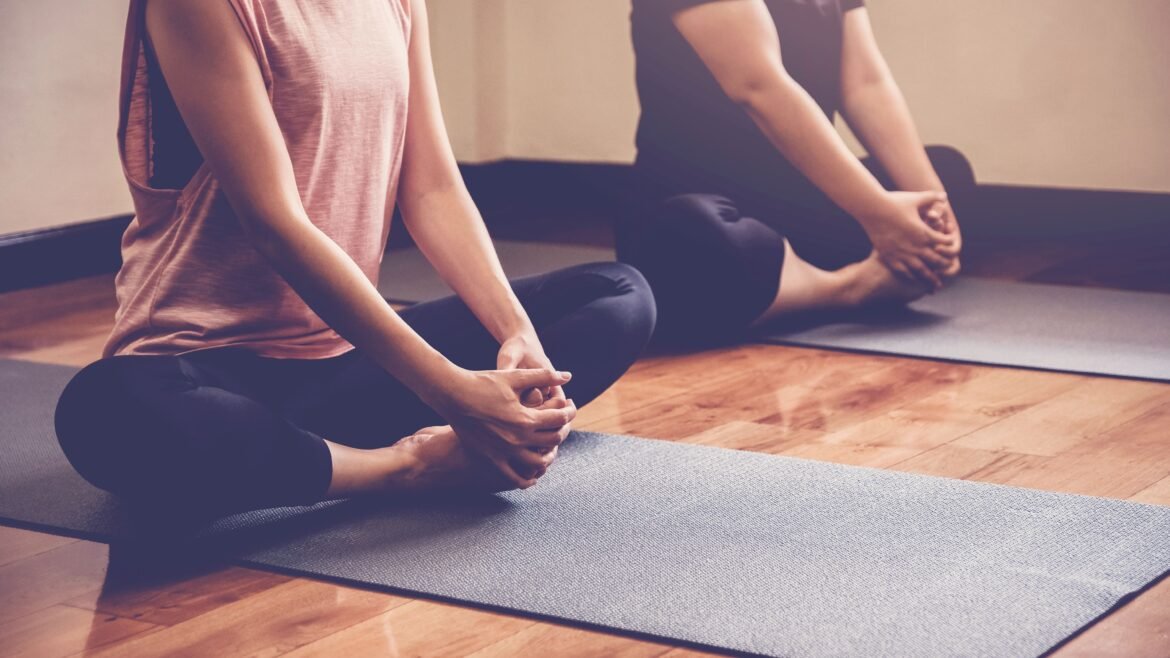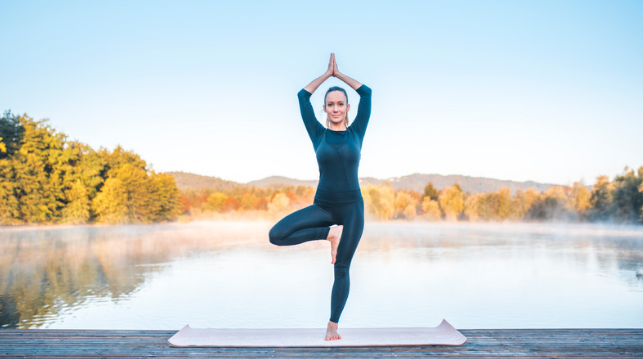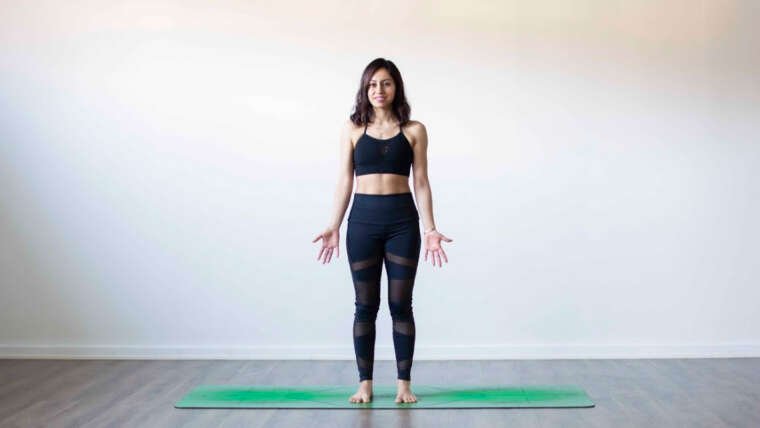Yoga started in ancient India as a way to bring the mind and body into balance. It wasn’t just about physical postures—it was a complete lifestyle that included meditation, breath control, and ethical living. Over time, it spread across the world, evolving into different styles and approaches.
Today, yoga is more popular than ever. People turn to it for stress relief, better flexibility, and overall health. It helps with posture, improves breathing, and even supports mental clarity. Some use it for fitness, while others seek its deeper, meditative benefits.
The best part? Yoga is for everyone. Whether you want a slow, relaxing practice or an intense workout, there’s a style that fits. It’s not just an exercise; it’s a tool to feel stronger, calmer, and more connected in daily life.
The Philosophy of Yoga
Yoga is more than just physical postures; it’s a way of life. Patanjali’s Eightfold Path provides a roadmap for a balanced, meaningful, and fulfilling life. It consists of eight interconnected steps that guide us toward self-discipline, inner peace, and self-realization.
1. Yama (Moral Restraints)
Yama teaches us how to interact with the world around us. It includes:
- Ahimsa (Non-violence): Be kind in thoughts, words, and actions. Avoid harm to yourself and others.
- Satya (Truthfulness): Be honest with yourself and others. Live with integrity.
- Asteya (Non-stealing): Respect others’ time, energy, and belongings. Take only what you need.
- Brahmacharya (Moderation): Control desires and excesses. Use energy wisely.
- Aparigraha (Non-possessiveness): Let go of material obsession. Live simply and gratefully.
2. Niyama (Self-Discipline)
Niyama focuses on personal habits and inner growth. It includes:
- Shaucha (Cleanliness): Keep your body, mind, and surroundings clean.
- Santosha (Contentment): Accept life as it is. Find peace in the present.
- Tapas (Discipline): Stay committed to your goals. Push through challenges.
- Svadhyaya (Self-study): Reflect on your actions. Learn from spiritual texts.
- Ishvarapranidhana (Surrender to the higher power): Trust the universe. Let go of ego.
3. Asana (Physical Postures)
Yoga postures build strength, flexibility, and balance. They prepare the body for meditation and improve overall health.
4. Pranayama (Breath Control)
Breathing techniques help regulate energy, reduce stress, and improve focus. Deep, mindful breathing boosts both mental and physical well-being.
5. Pratyahara (Withdrawal of Senses)
This step teaches us to turn inward. Instead of being distracted by the outside world, we focus on our inner self.
6. Dharana (Concentration)
Dharana sharpens the mind. It trains us to focus on a single point—like a mantra, breath, or object—without distraction.
7. Dhyana (Meditation)
This is deep mindfulness. It helps calm the mind, improve awareness, and bring inner peace.
8. Samadhi (Self-Realization)
The final stage of yoga is complete awareness and unity with the self. It is the ultimate goal, finding pure bliss and enlightenment.
By following these steps, yoga becomes more than exercise. It becomes a tool for a balanced, peaceful, and fulfilling life.
Different Types of Yoga
Yoga comes in many forms, each designed to meet different needs. Whether you want a gentle practice or an intense workout, there’s a yoga style for you.
1. Hatha Yoga – Best for Beginners
Hatha Yoga is slow-paced and focuses on basic postures, breath control, and relaxation. It’s great for beginners who want to build a strong foundation. This style improves flexibility, balance, and mindfulness.
2. Vinyasa Yoga – Flow with Breath
Vinyasa Yoga is a dynamic practice where movements flow smoothly with the breath. It builds strength, endurance, and flexibility. This style keeps you engaged as each session feels different.
3. Ashtanga Yoga – Intense & Disciplined
Ashtanga Yoga follows a structured sequence of poses linked with breath. It’s physically demanding and requires commitment. This style improves strength, flexibility, and mental focus.
4. Iyengar Yoga – Focus on Alignment
Iyengar Yoga is all about precision and body alignment. Props like blocks, straps, and bolsters help hold poses correctly. It’s great for injury recovery and improving posture.
5. Bikram Yoga – Hot & Sweaty
Bikram Yoga consists of 26 fixed poses practiced in a heated room (about 40°C). The heat helps muscles stretch deeply and flush out toxins. It’s a challenging yet detoxifying practice.
6. Kundalini Yoga – Awaken Inner Energy
Kundalini Yoga combines breathwork, chanting, and dynamic movements to awaken spiritual energy. It boosts mental clarity, emotional balance, and overall well-being.
7. Yin Yoga – Deep Stretch & Relaxation
Yin Yoga is a slow-paced practice where poses are held for longer (3-5 minutes). It targets deep connective tissues and promotes relaxation. It’s perfect for stress relief and flexibility.
8. Restorative Yoga – Ultimate Relaxation
Restorative Yoga is all about relaxation. With the support of props, poses are held for extended periods to release tension. It’s ideal for recovery and calming the nervous system.
9. Power Yoga – Modern & Intense
Power Yoga is a high-energy, fitness-based style. It combines strength, flexibility, and cardio. It’s great for those who want a workout while practicing yoga.
10. Prenatal Yoga – Safe for Moms-to-Be
Prenatal Yoga is designed for expecting mothers. It focuses on gentle stretches, breathwork, and relaxation techniques. It helps ease pregnancy discomfort and prepares the body for childbirth.
Each yoga style offers unique benefits. Choose one that matches your fitness level, goals, and preferences.
Benefits of Yoga
Yoga is more than just exercise. It improves physical health, calms the mind, and nurtures the soul. Let’s look at its key benefits:
Physical Health Benefits
- Improves flexibility, strength, and posture – Regular practice stretches muscles, increases mobility, and strengthens the body. It also corrects posture, reducing back and neck pain.
- Lowers blood pressure and promotes heart health – Yoga helps relax the body, improves circulation, and reduces stress, which supports heart health.
- Aids digestion and boosts immunity – Certain poses massage internal organs, improving digestion and metabolism. Yoga also strengthens the immune system by reducing stress and inflammation.
Mental Well-Being Benefits
- Reduces stress, anxiety, and depression – Breathing exercises and meditation lower cortisol (the stress hormone). Yoga helps calm the mind, reduce anxiety, and improve mood.
- Enhances focus, mindfulness, and emotional balance – Yoga trains the mind to stay present. This improves concentration, decision-making, and emotional stability.
Spiritual Growth Benefits
- Helps in self-discovery and inner peace – Yoga encourages self-reflection and mindfulness. It helps you understand yourself better and develop inner harmony.
- Connects mind, body, and soul – Through breathwork and meditation, yoga creates a deep connection between the physical and spiritual self, leading to a sense of peace and fulfillment.
Risks and Safety Considerations in Yoga
Yoga is generally safe, but not all poses suit everyone. Some movements can strain muscles or worsen existing conditions. Practicing with awareness helps prevent injuries.
Who Should Be Careful?
People with health conditions should take precautions:
- Herniated disks – Avoid deep backbends and twists, as they can worsen pain.
- High blood pressure – Inversions like headstands can increase pressure. Gentle poses and breathing exercises are safer.
- Arthritis – Hard floor poses may strain joints. Use props and practice slow movements.
- Asthma – Sudden breath control techniques might trigger discomfort. Focus on smooth, controlled breathing.
Consult a Doctor First
If you have any medical condition, ask your doctor before starting yoga. They can recommend safe practices based on your health.
Use Proper Equipment
A good yoga mat prevents slipping and supports joints. Comfortable clothing allows free movement. Yoga blocks and straps help beginners perform poses correctly and safely.
Listen to Your Body
Yoga should not cause pain. Move slowly, breathe deeply, and avoid forcing poses. If something feels wrong, stop and adjust.
How to Get Started with Yoga
Starting yoga can feel overwhelming, but it’s simple when you take it step by step. The key is to find a style that matches your goals and lifestyle.
Choose the Right Type of Yoga
Different styles serve different needs:
- For beginners – Hatha yoga is slow and easy to follow.
- For fitness – Power yoga and Vinyasa help build strength.
- For stress relief – Yin or Restorative yoga promotes relaxation.
- For deep practice – Kundalini focuses on breath and energy flow.
Try different styles and instructors before choosing one. Some people enjoy a mix of styles, while others prefer consistency.
Tips for Beginners
- Start slow and focus on the basics.
- Be consistent; progress comes with regular practice.
- Breathe deeply—it helps movement and relaxation.
- Use props if needed to improve posture and comfort.
- Don’t compare yourself to others; yoga is a personal journey.
Get Expert Guidance
Learning from an experienced teacher prevents mistakes and injuries. If you prefer learning at home, Yoga at Home offers professional guidance through online and private sessions. Their expert trainers help you build a strong foundation, making yoga accessible and safe.
With patience and dedication, yoga can become a rewarding part of your daily life. Start small, stay consistent, and enjoy the journey.
Yoga isn’t just about bending and stretching. It’s a way to feel better, both physically and mentally. With regular practice, you’ll build strength, reduce stress, and find a sense of balance in your life.
Starting can feel overwhelming, but don’t overthink it. Just begin, stay consistent, and enjoy the journey. If you need help, Yoga at Home offers expert guidance to make learning easy and effective.
You don’t need fancy equipment or extreme flexibility. Yoga is for everyone. Take that first step, keep going, and see how it transforms your mind and body.



